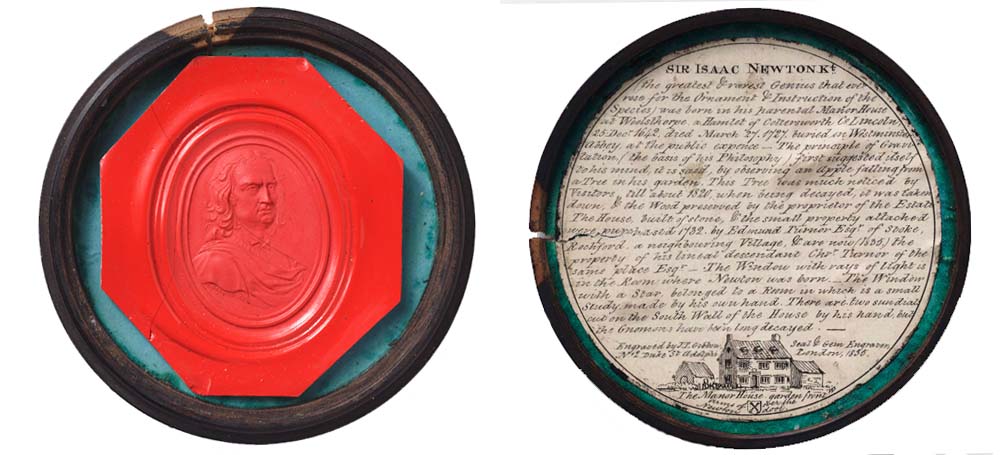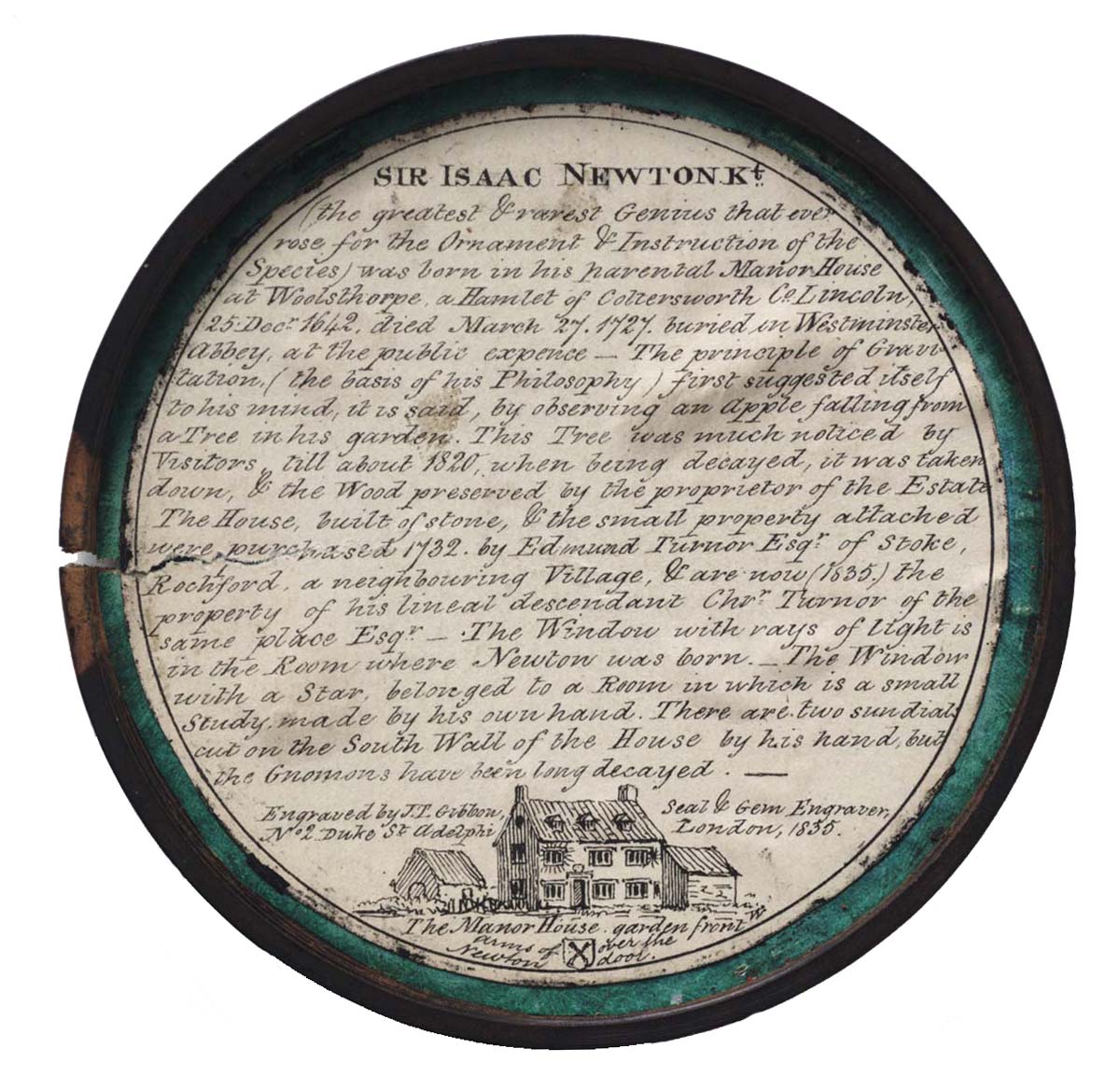Wax impression of Isaac Newton
As someone who served as Master of the Mint from 1699 to 1727 Sir Isaac Newton is naturally of interest to the current generation of Mint employees. His contribution may not have been revolutionary but he did bring dignity and prestige to the Mint and his impact continues on the coinage to this day in the form of a quotation that appears as the edge inscription on the two-pound coin – STANDING ON THE SHOULDERS OF GIANTS.

The portrait pictured here, by the seal and gem engraver J T Gibbon of London, is a wax impression dating from 1835 that was acquired by the Mint Museum in recent years. It sits inside a small round wooden box, the lid of which contains a dedicatory note to Newton referring to the house in which he was born at Woolsthorpe. The Museum collection includes a number of portraits of Newton - sculptures as well as medals and tokens - to represent this most important of Mint officers.

Transcript – Sir Isaac Newton Kt. (the greatest & rarest genius that ever rose for the Ornament & Instruction of the Species) was born in his parental Manor House at Woolsthorpe, a Hamlet of Coltersworth Co. Lincon, 25th Dec’r. 1642, died March 27. 1727. Buried in Westminster Abbey, at the public expense – The principle of Gravitation, (the basis of his philosophy) first suggested itself to his mind, it is said, by observing an apple falling from a Tree in his garden. This Tree was much noticed by Visitors, till about 1820, when being decayed, it was taken down, & the wood preserved by the proprietor of the Estate. The House, built of stone, & the small property attached were purchased 1732. By Edward Turnor Esq’r of Stoke, Rochford, a neighbouring Village, & are now (1835.) the property of his lineal descendant Chr’r Turnor of the same place Esq’r – The Window with rays of light is in the Room where Newton was born. _ The Window with a Star, belonged to a Room in which is a small study made by his own hand. There are two sundials out on the South Wall of the House by his hand, but the Gnomons have been long decayed. – Engraved by J.L.Gibbon, Seal & Gem Engraver , No 2 Duke Street Adelphi, London 1835.
